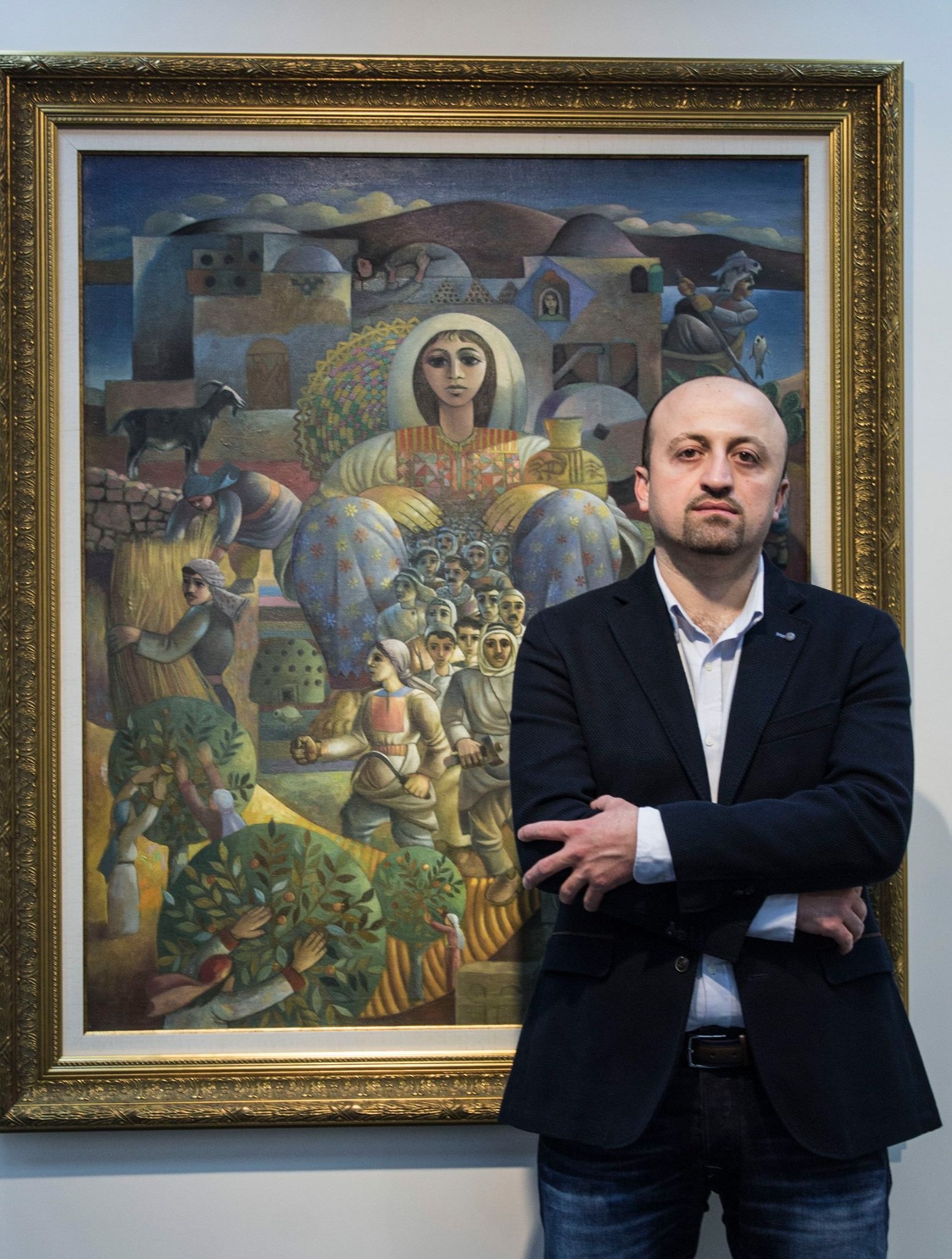One would think that the art scene in Palestine started with the British Mandate period (1917–1948). However, there is plenty of evidence that Palestinians were creatively working in the arts as early as the mid-nineteenth century.
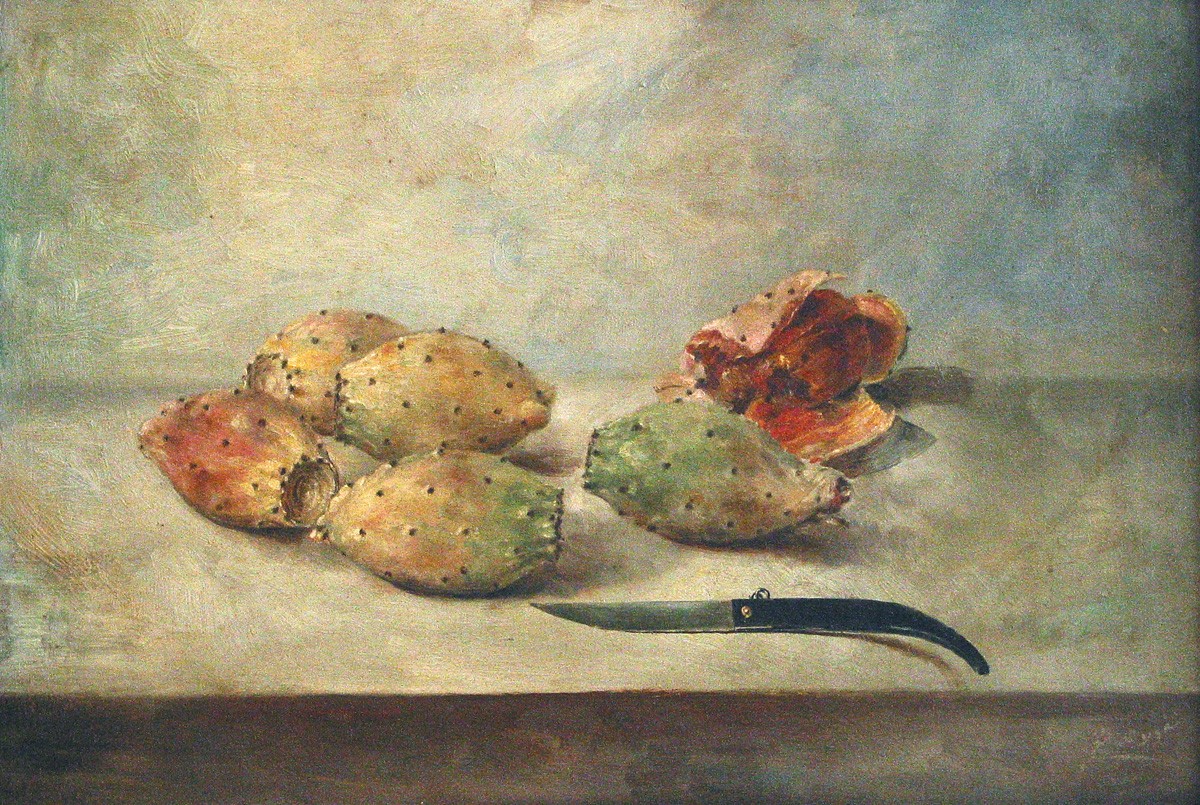
Jiryes Jawhariyyeh (1838–1914), for instance, the father of Wassif Jawhariyyeh whose memoirs documenting life in the early twentieth century were published by the Institute for Palestine Studies, started as an iconographer and later in his life moved on to painting secular artworks. He is credited with influencing the famous painter Nicola Saig (1863–1942), who had a prominent studio shop inside the Old City of Jerusalem in the 1900s. One of Saig’s famous artworks of that period, Still Life of Cactus Fruit, was realized in the first quarter of the twentieth century. Saig too, in fact, started as an icon painter, the school of which had already been in practice for at least three centuries. The famous icon/painting Topography of the Holy Land (Proskynetarion) has been around since the seventeenth century, and commissioned copies have been sold to pilgrims ever since. Art experts, however, consider Nicola Saig to be the father of modern art in Palestine.
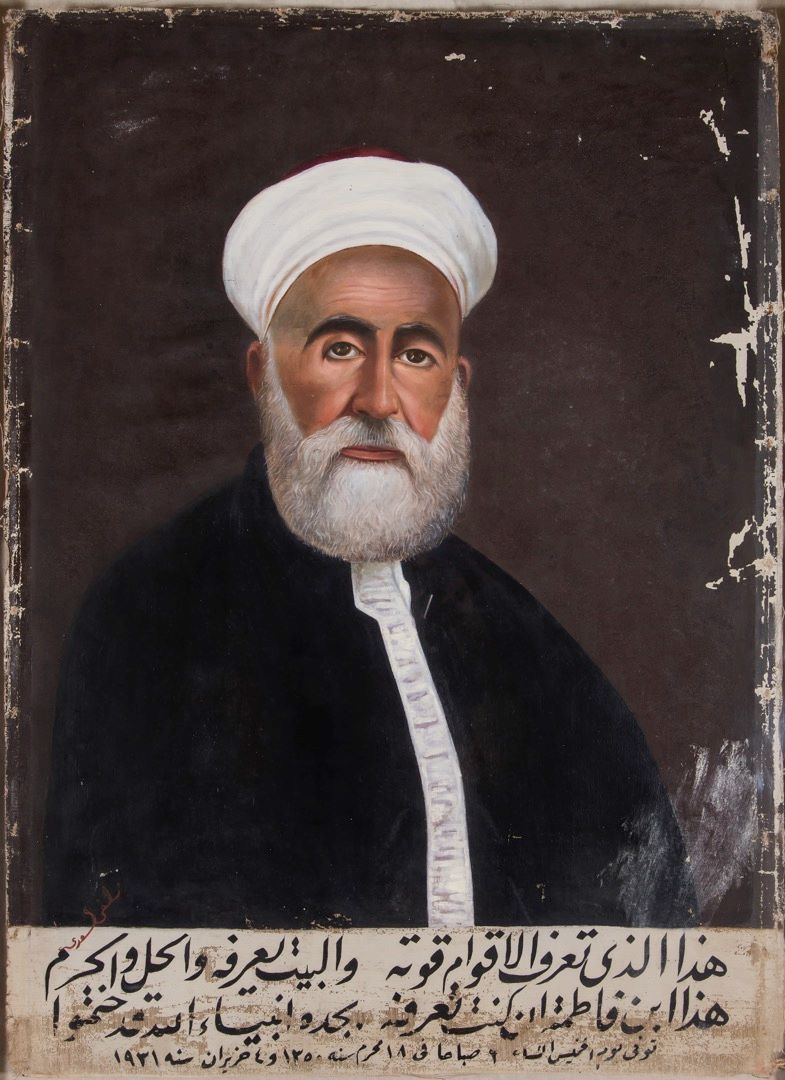
Zulfa Sa’adi (1905–1988), one of Saig’s students, is best known as the first artist to have pioneered a solo art exhibition in 1933 that was held at the Supreme Muslim Council Building in Jerusalem (currently the Waldorf Astoria Hotel!). The art exhibition was part of the Palestine Pavilion of the First National Arab Fair held that year. It is documented that Sa’adi’s guest book was signed by more than 500 visitors, including dignitaries who were both local Palestinians and regional personalities. Sa’adi was 28 years old when the exhibition took place. Her subject matter included Arab heroes, such as Salah Eddin, Ahmad Shawqi, Tareq Ben Ziad, and famed Libyan freedom fighter Omar al-Mukhtar. Other themes encompassed city and village scenes and landscapes of Palestine.
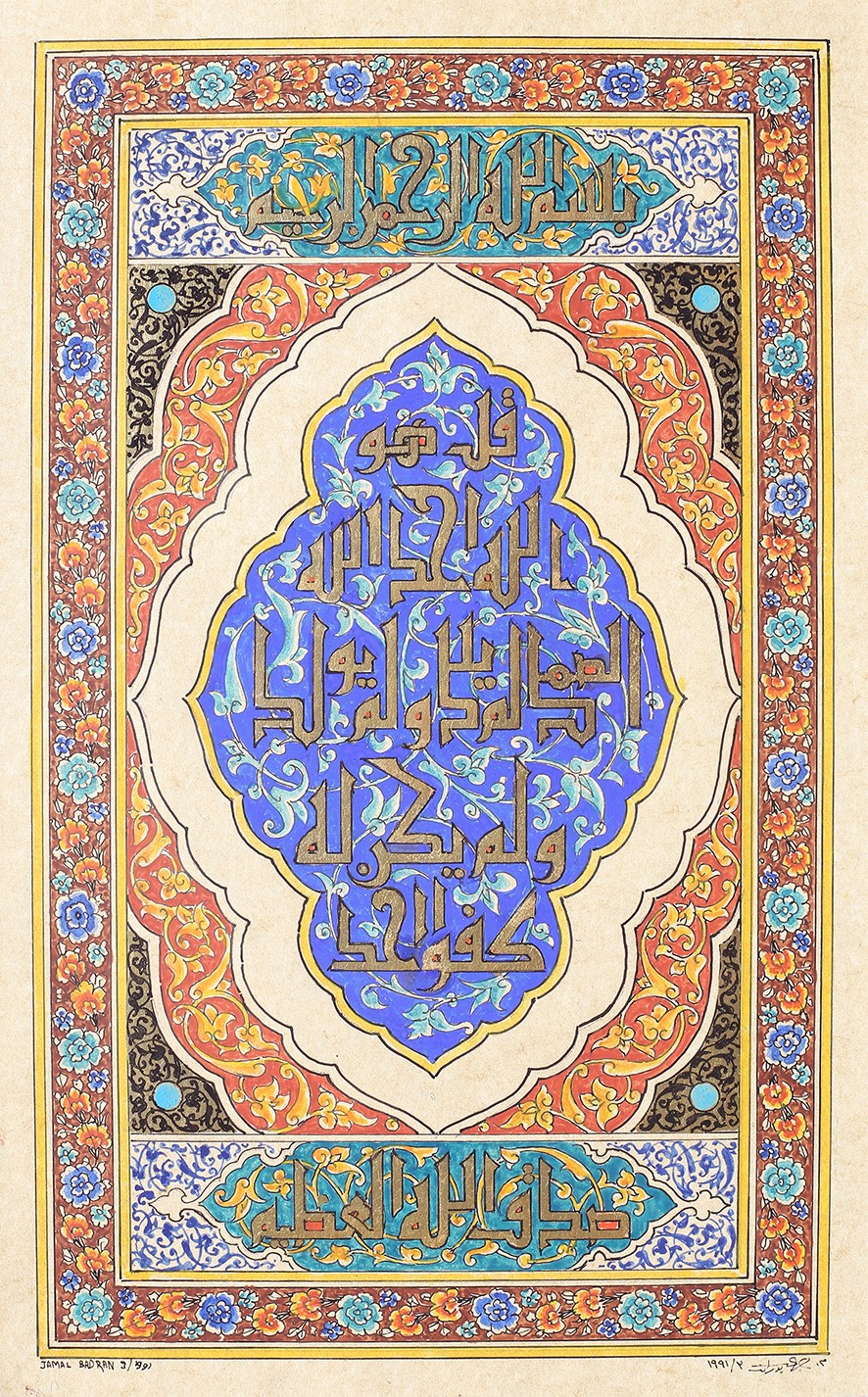
Jamal Badran (1909–1999) is best known for his works in Islamic arts and crafts and Arabic calligraphy. Badran studied in Cairo and then in London between 1922 and 1927. Possibly his highest-profile assignment was reconstructing the pulpit (minbar) of Salah Eddin at Al-Aqsa Mosque in Jerusalem after it had been burnt by an Israeli settler in 1969. Badran had excellent and extensive experience in the field of Islamic decoration, and actually drew 33 plates of the minbar decorations at a scale of 1/1, making use of the remnant wooden pieces of the burnt minbar and the available minbar images from various museums.
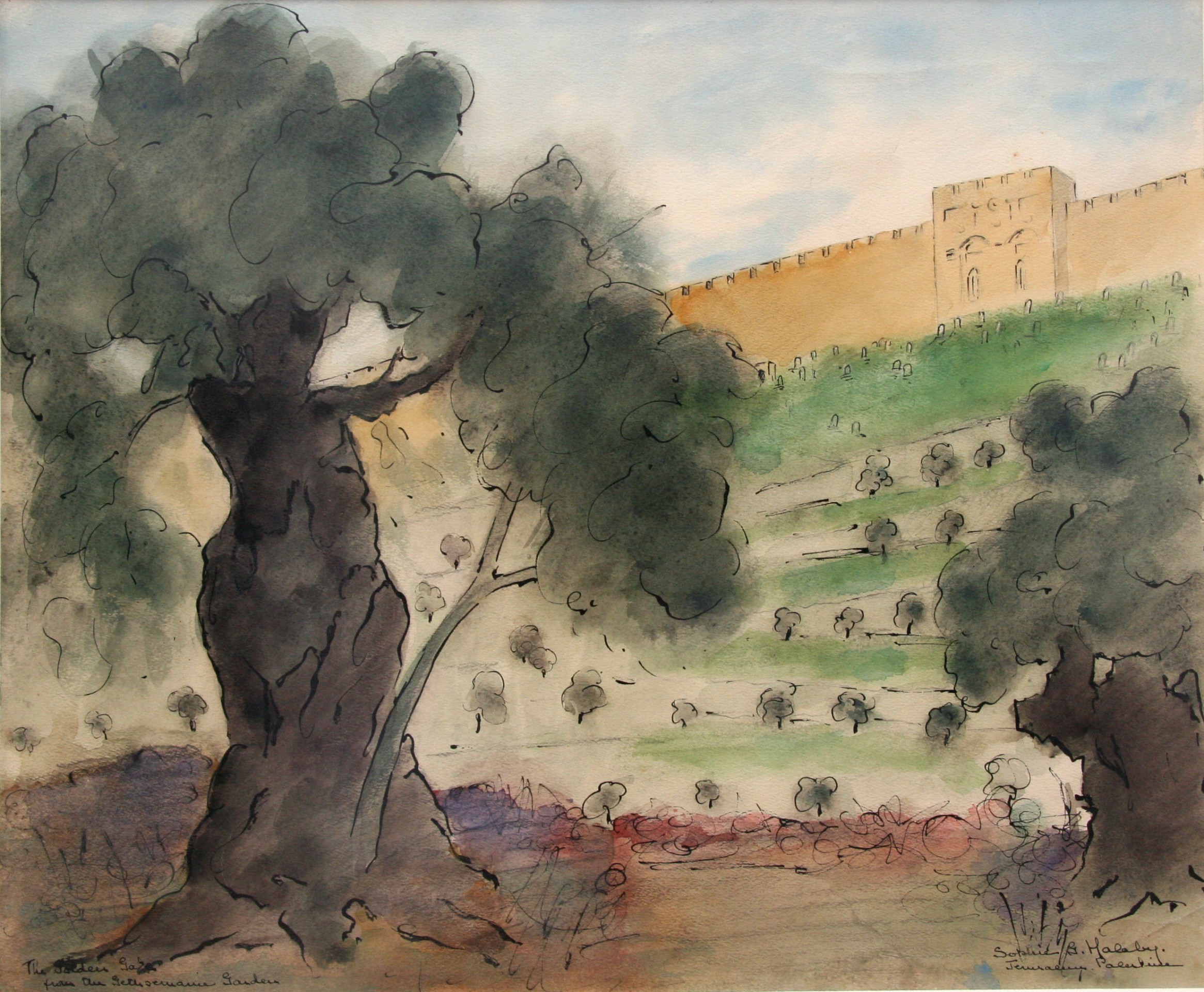
Sophie Halaby (1906–1998), born to a Palestinian father and a Russian mother, was a bold and outspoken person who never feared to express her opinion head-on. To strangers, she appeared tough and hardheaded, but her closest friends insist that she had an amiable character, a heart of gold, and a great sense of humor. Possibly her most famous of eccentricities – if we were to call them so – was teaching her cat to sit and have dinner with her and her sister Asia (Anastasia) while holding a fork. That’s the cat holding the fork! She also spoke to her dog Patra in French! It is said that the Jordanian government in the early 1960s had asked Sophie to become the Jordanian ambassador in Moscow. As an artist, Sophie adopted watercolors as her main medium even though she also practiced oil, tempera, pencil, and charcoal. Within Palestine or abroad, she would always carry portfolios filled with Canson drawing paper. She created significant series of landscapes, most importantly landscapes of Jerusalem, her beloved city. She mastered portrait painting and also still lifes.
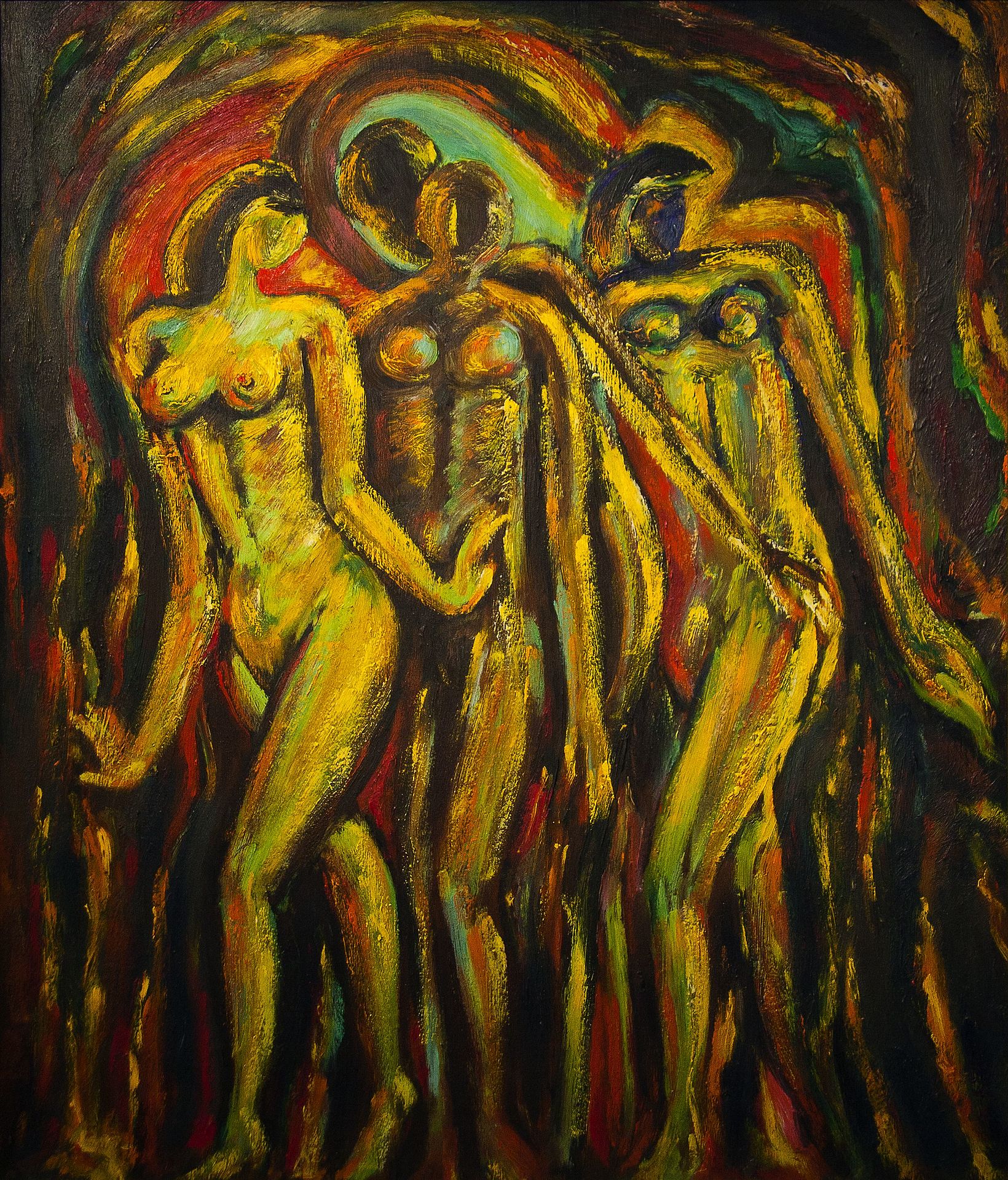
Jabra Ibrahim Jabra (1920–1994), better known for being a writer and an art critic, shall always remain one of the pioneer Palestinian artists of the twentieth century. Born in Bethlehem to a Syriac-Orthodox Christian family in 1920, Jabra went to school in Bethlehem and later in Jerusalem. He continued his education at the University of Exeter and University of Cambridge, where he obtained a degree in English literature. In 1951, Jabra was granted a fellowship from Harvard University. He used oil colors to paint on gunnysack canvas, wooden panels, and glass – innovative and not very common media. Women and nudity repeatedly appear in Jabra’s paintings, and the inner conflict described by the artist is very clear in his paintings, some of which are signed Gabriel Jabra. Jabra left Palestine and moved to Iraq in 1948 where his literary career flourished and where he contributed to the Iraqi art movement. The Palestinian-exile, Iraqi citizen Jabra died in Baghdad in 1994, leaving behind an art inheritance that was destroyed during the explosion of his house in April 2010.
It is worth mentioning that the artists featured above are only a few of a long list of artists who enriched the artistic and cultural scene of Palestine prior to the Nakba of 1948. The following list includes the names of other Palestinian artists who were active in pre-1948 Palestine. Again, the list is not comprehensive but illustrates that the “Land without a People” included not only ordinary people but also artists whose work ought to be reckoned with.
– Tawfiq Jawhariyyeh (1891–1944): Romantic painter and brother of Jiryes
Jawhariyyeh
– Hanna Musmar (1898–1988): Sculptor
– Mubarak Sa’ad (1880–1967): Art restorer and muralist
– Abdel Qader Shihabi (1897–1952): Major calligrapher of Jerusalem and all of Palestine
– Khalil Halabi (1889–1964): Iconographer, painter, and muralist
– Daoud Zalatimo (1906–1998): Painter and art educator
– Nahil Bishara (1920–1997): Painter and sculptor
George Al Ama is a researcher and collector of Palestinian material culture and art. He works as an art consultant for Bank of Palestine.
Article photos courtesy of George Al Ama.

